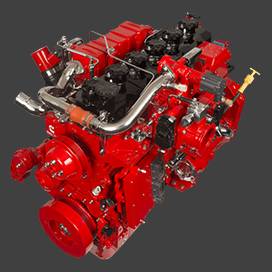Oct . 06, 2024 10:08 Back to list
brake drum vs disc
Brake Drum vs. Brake Disc A Comprehensive Comparison
When it comes to vehicle braking systems, understanding the components involved can significantly impact both performance and safety. The two most common types of braking systems are drum brakes and disc brakes. Each has its advantages and disadvantages, making them suitable for different applications. This article will explore the differences between brake drums and brake discs, helping you make an informed decision on which might work best for your vehicle.
Overview of Brake Drums
Brake drums are circular, cylindrical components that house the brake shoes. When the brake pedal is pressed, hydraulic pressure forces the brake shoes outward against the inner surface of the drum, creating friction that slows down the vehicle. Drum brakes are often found in older vehicles and on the rear wheels of many modern vehicles due to their cost-effectiveness and robust design.
Advantages of Brake Drums
1. Cost-Effective One of the most significant benefits of brake drums is their lower manufacturing and replacement cost. This makes them a popular choice for budget-conscious consumers.
2. Effective in Low-Speed Conditions Drum brakes tend to provide better braking performance under low-speed conditions, making them ideal for city driving.
3. Less Prone to Water Damage The enclosed design of drum brakes makes them more resistant to water and debris, which can adversely affect braking performance.
4. Simplicity The mechanical design of drum brakes is straightforward, making them easier to maintain for some mechanics.
Disadvantages of Brake Drums
1. Heat Dissipation Drum brakes have a limited ability to dissipate heat, which can lead to brake fade during extended periods of use, such as in downhill driving.
3. Complexity of Replacement While maintenance might be simpler, replacing drum brakes can be more complicated due to the assembly of multiple components.
brake drum vs disc

Overview of Brake Discs
Brake discs, or rotors, are typically made of cast iron or composite materials. When the brake pedal is pressed, brake pads clamp onto the disc, creating friction that slows and stops the vehicle. Disc brakes have become the standard for modern vehicles, particularly in the front brake system.
Advantages of Brake Discs
1. Heat Dissipation Disc brakes have better heat dissipation capabilities, which reduces the risk of brake fade. This makes them particularly effective for high-speed driving and extended braking situations.
2. Lightweight Disc brakes tend to be lighter than drum brakes, contributing to improved vehicle performance and fuel efficiency.
3. Faster Response Disc brakes provide quicker engagement, allowing for more responsive braking. This is particularly beneficial in emergency situations.
4. Easier Maintenance It is often easier to inspect and replace disc brakes as they are simpler in design and allow for quick access to the brake pads.
Disadvantages of Brake Discs
1. Cost Brake discs are generally more expensive to manufacture and replace than drum brakes, which can be a consideration for budget-conscious buyers.
2. Less Effective in Low-Speed Conditions While they perform exceptionally at high speeds, disc brakes can sometimes struggle in low-speed scenarios compared to drum brakes, especially on light vehicles.
3. More Exposure to Elements Disc brakes are more exposed to water and debris, which can impact performance when driving in challenging conditions.
Conclusion
In summary, the choice between brake drums and brake discs largely depends on the specific needs of your vehicle, driving style, and budget. Drum brakes may be adequate for everyday driving, particularly in less demanding conditions, while disc brakes offer superior performance, especially for high-speed and heavy-application scenarios. Understanding the strengths and weaknesses of both systems will help you choose the best option for safe and effective braking in your vehicle.
-
Scania Brake Drums: OEM Quality for Optimal Safety & Durability
NewsAug.16,2025
-
R.V.I: Advanced Remote Visual Inspection for Precision
NewsAug.15,2025
-
Discover HYUNDA: Innovative Vehicles, Equipment & Solutions
NewsAug.14,2025
-
R.V.I: Unlock Advanced Insights & Real-time Performance
NewsAug.13,2025
-
Kamaz Brake Drum: Durable & Reliable for Heavy Duty Trucks
NewsAug.12,2025
-
Heavy Duty Iveco Brake Drum - Premium Quality & Safety
NewsAug.11,2025
